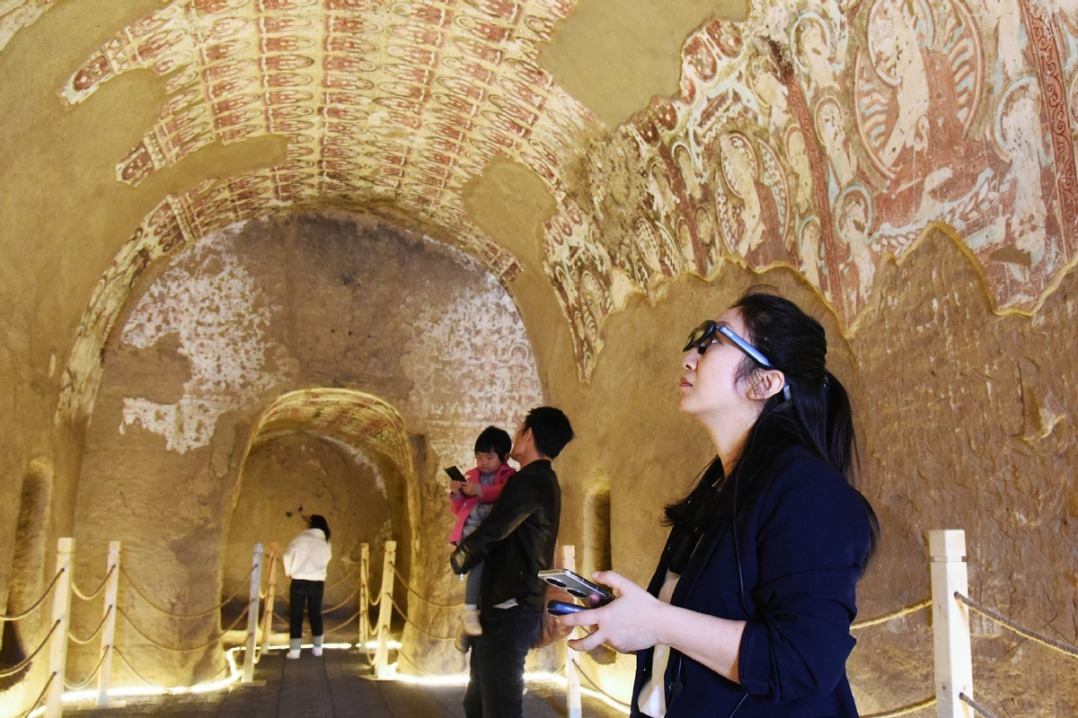Two radio telescopes put into use to support deep space exploration


Two radio telescopes with 40-meter-diameter antennas, one located on Changbai Mountain, Jilin province, and the other in Shigatse, Xizang autonomous region, have been put into operation, the Shanghai Astronomical Observatory of the Chinese Academy of Sciences announced on Friday.
The two new telescopes will better support China's lunar exploration projects and radio astronomy research, the observatory said.
Located in the northeastern and southwestern parts of China, respectively, the two telescopes — together with existing radio telescopes in Shanghai; Urumqi, Xinjiang Uygur autonomous region; and Kunming, Yunnan province — the newly added facilities will significantly improve the configuration of China's Very Long Baseline Interferometry network.
VLBI networks allow multiple astronomical telescopes to observe a celestial body simultaneously, providing far more extensive detail and data.
"With the addition of these two new telescopes, the effective diameter of China's VLBI network has increased from 3,200 kilometers to 3,800 km, resulting in an 18-percent increase in resolution and a 25-percent increase in observable sky area," said Shen Zhiqiang, director of the Shanghai Astronomical Observatory.
"We can accurately observe a celestial body using three telescopes. Now with more telescopes, we can simultaneously observe two different directions or even different celestial bodies, providing important support for China's future deep space exploration," Shen said, adding that the telescopes will participate in supporting the Tianwen 2 mission next May.
He said the bringing online of the two new radio telescopes will play a significant role in advancing research in various cutting-edge fields of astronomy, such as super-massive black holes, fast-changing compact celestial bodies, gravitational wave electromagnetic counterparts and the dynamics of the Milky Way galaxy.
Radio telescopes receive radio waves emitted by celestial bodies and convert the radio wave signals into scientific data for analysis and research by scientists, enabling astronomical observations.
"We know that the larger the diameter of the telescope, the stronger its ability to see details," Shen said. "The telescopes at Shigatse and Changbai Mountain, which are 3,800 km apart, are equivalent in resolution capabilities to a telescope with a diameter of 3,800 km."
In the 1960s, important astronomical discoveries such as pulsars and cosmic microwave background radiation were made with the help of radio telescopes.
The Shanghai Astronomical Observatory launched construction of the two new radio telescopes in September 2023.
Ding Chibiao, academician and vice-president of the CAS, said that the construction of major scientific infrastructure is important, and its application is also critical.
"We hope to gather a group of top talent, cultivate young talent and stabilize a group of engineering and technical talent based on outstanding facility platforms," Ding said.
China began building its VLBI network in the 1970s. In 2004, the lunar exploration project was launched, and VLBI technology played an important role in the orbital measurements and performance of the Chang'e 1 lunar probe.
Subsequently, accurate orbit determinations were also conducted for Chang'e 2 to Chang'e 6 and China's first Mars exploration mission Tianwen 1.
Ye Shuhua, an academician at the CAS and honorary director of the Shanghai Astronomical Observatory, said that through the relentless efforts of generations of scientific and technological workers, she deeply senses the country's increasing strength and continuous technological development.
"I believe that the 40-meter radio telescopes at Shigatse and Changbai Mountain will play an important role in the future lunar exploration project, as well as in deep space exploration missions to asteroids, Mars, Jupiter and beyond," she said.
Shi Yudie contributed to this story.
- China's expanded radio telescope network bolsters lunar exploration and astronomy research capabilities
- China's two new radio telescopes put into use to support deep space exploration
- FAST discovery of pulsars exceeds 1,000
- China's FAST telescope identifies over 1,000 pulsars
- China Focus: China's dark energy detector granted SKA pathfinder status
- China cultivates first-generation 'space highland barley'
- China's reintroduced crested ibis sets migration records
- China expects record 790m cross-regional trips during Qingming holiday
- China to accelerate digitalization of eco-environment monitoring network
- Book of Xi's discourses on Chinese modernization published in Spanish
- China sci-tech museums adopt AI-powered assistants




































